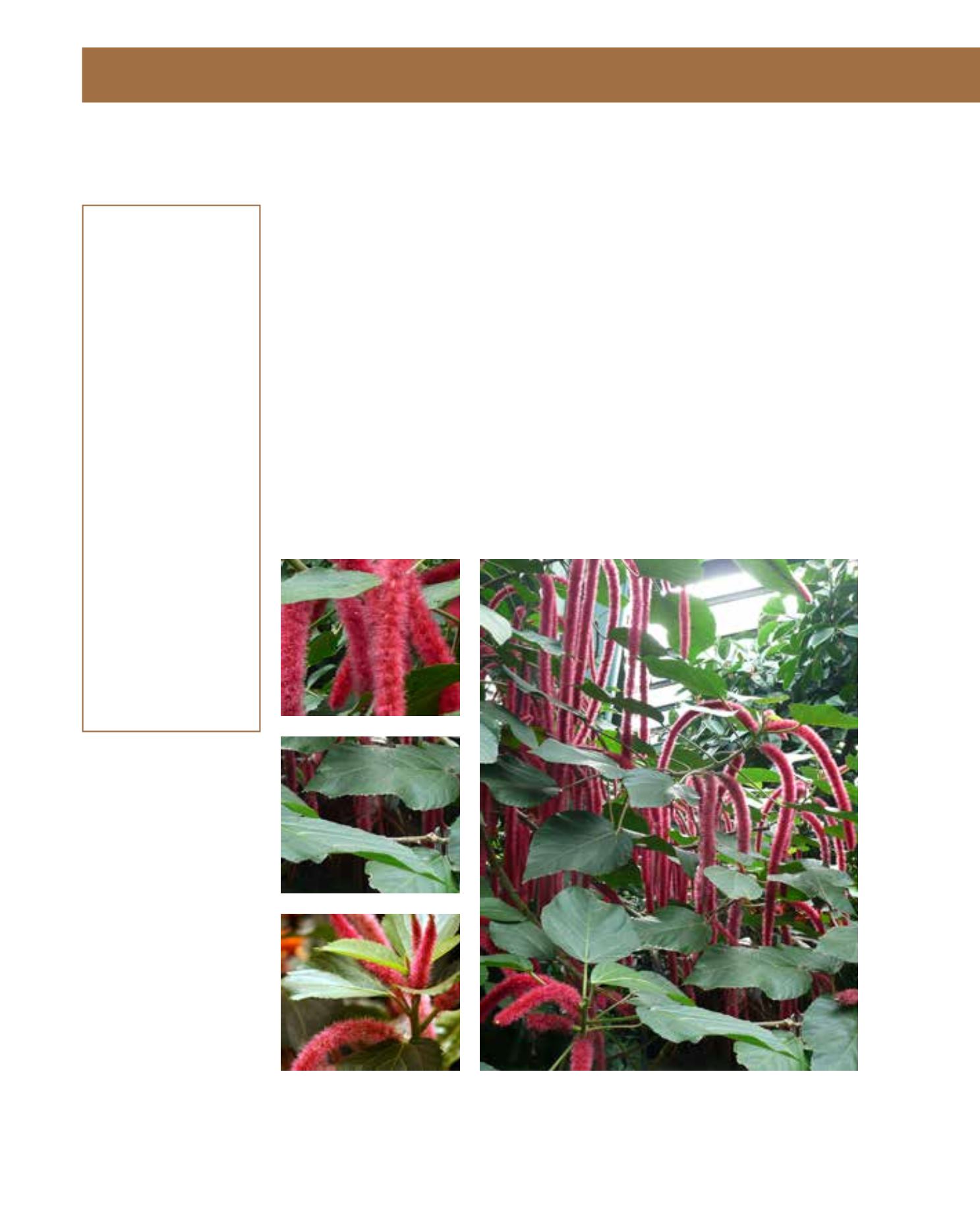

GENERAL
Origin
:
sub-tropical,
tropical
Vigour
:
fairly fast
growing
Humidity
:
semi-arid, semi-
humid, very
humid
Propagation :
cuttings
Maintenance :
moderate
CONDITIONS
Urban climate :
vulnerable
Dessication :
vulnerable
Stagnant water :
vulnerable
Irrigation
:
medium
Salinity/ppm :
moderate (1800
ppm)
Hardiness
:
+3°C
SHAPE
Type
:
shrub
Height
:
2 m-3 m
Spread
:
2 m-3 m
Foliage
:
evergreen
FLOWER
Colour
:
bright red
Size
:
30 cm - 50 cm
Period
:
May - August
FRUIT
Type of fruit :
capsule
Fruit size
:
0.1 cm
The Chenille Plant is an attractive shrub, some 3 metres high, that originates from southeast Asia.
A lush impact may be achieved by dark-green leaves of about 15 cm in length. They contrast
well with the bright red, furry catkins. The latter may become up to 50 cm long, and account
for common names such as Fox Tail or Red Hot Cat‘s Tail. Scattered blooming all year round
makes the female Chenille Plant highly desirable for use in planting. It flowers most heavily in
early summer. Propagation by seeds and cuttings is easily possible; note that the more attractive
flowers are borne on female plants. It sometimes naturalises in favourable conditions but does not
become a nuisance in Arriyadh, owing to a lack of water beyond irrigated areas. It can be used
as an accent plant or flowering hedge. Severe pruning results in lush, rejuvenated growth and is
an appropriate method to keep a neat habit. Its size can also be controlled by pinching the tips
and pruning without damaging the leaves. It tolerates heavy and alkaline soil, but needs frequent
watering if exposed to full sun. Partial sun and even some shade suit it better. Wind and low
humidity may provoke dried leaf margins; these should be avoided by choosing the right planting
location carefully. It is vulnerable to industrial fumes and urban microclimates. The Chenille
Plant is rarely affected by pests. If grown indoors, it may occasionally be infested by scales. It
should be considered that the plant is poisonous if eaten by animals.
37
Acalypha hispida,
Euphorbiaceae
Chenille Plant
















